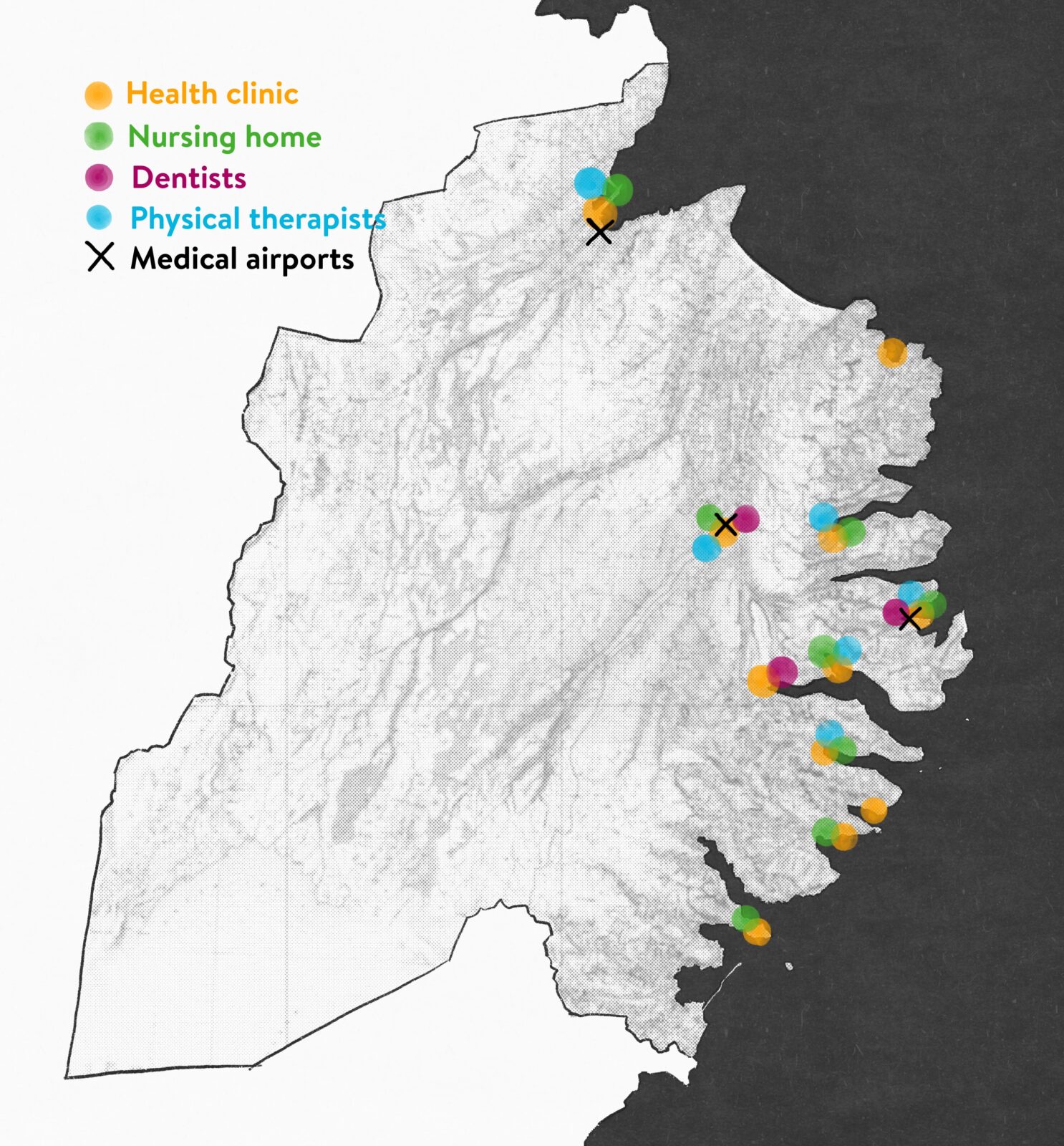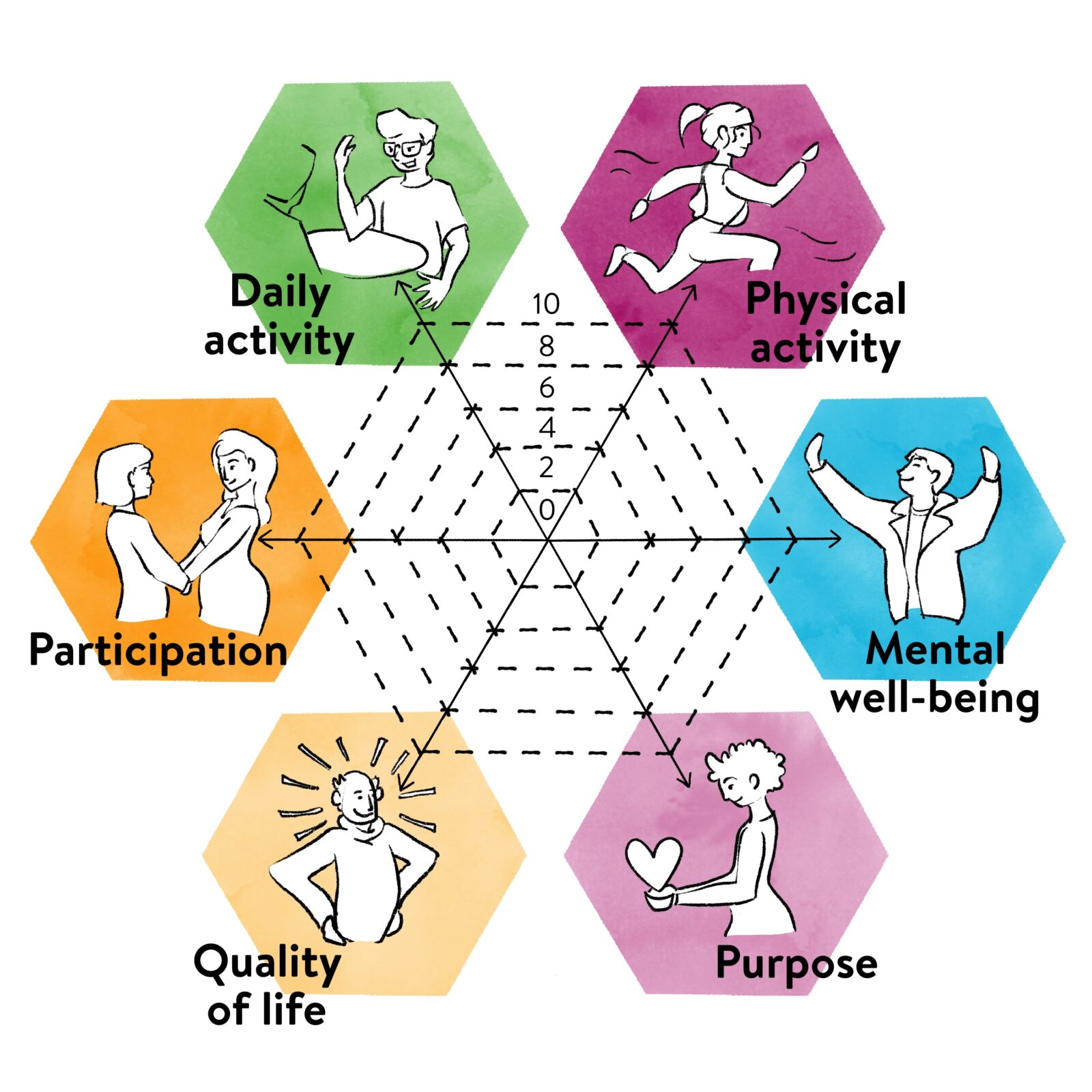5.3 Basic Services and Health
East Iceland will have strong and progressive basic services, including healthcare. Digital solutions will be employed to address various tasks, and great emphasis will be placed on the physical and mental health of the residents.

U. Policy on Basic Services
U.1 Improved Access to Quality Basic Services
Efforts will be made to ensure that basic services are provided as close to residents as possible and generally within a 60-minute drive for residents of the region. Where this is not possible, remote services will be offered.
When locating services, consideration will be given to settlement patterns and the size of service centres.
Ways will be sought to support multi-core communities with appropriate distribution and sharing of services.
U.2 Digital and Environmentally Friendly Solutions to Characterize Public Services in East Iceland
Municipalities and institutions in East Iceland will be encouraged to adopt digital solutions in public services for residents. Funding for this will be secured, and human resources will be strengthened.
Sustainable practices will be promoted in public procurement.
U.3 Strengthening Healthcare Services in the Region
Efforts will be made to ensure that the East Iceland Health Institution can provide its mandated services effectively, cope with unexpected crises, and work on preventive measures and the promotion of both mental and physical health for residents.
Emphasis will be placed on establishing and further enhancing collaboration and consultation between the region’s municipalities and the East Iceland Health Institution.
Efforts will be made to strengthen the regional hospital of East Iceland.
Efforts will be made to strengthen health centres as key providers of local services, prevention, and health promotion.
Efforts will be made to develop nursing homes according to needs.
Efforts will be made to improve transportation and develop smart services to enhance access to healthcare.
Efforts will be made to provide educational opportunities in health and other basic services.

Explanations for the Policy on Basic Services
Basic services generally refer to the public services that the state or municipalities are required to provide, such as healthcare, education, law enforcement, services for the elderly, services for people with disabilities, and social services. Transportation and telecommunications also fall under this category but are discussed in the chapter “Good Habitats,” as a good living environment helps attract employees.
The vision of the Regional Development Plan 2018–2024 is for all regions to have thriving communities and strong urban centres with the most equal access to basic services as close to the local community as possible, regardless of economic status and residence.18 This vision aligns well with East Iceland’s emphasis on regional development, and the region also aims to be a leader in digital solutions in public services. This applies to all basic services, but particular attention must be paid to healthcare to improve all aspects of public health, respond to the aging population, and ensure the best possible access to services regardless of residence.
The East Iceland Health Institution operates the regional hospital in Neskaupstaður, health centres in larger urban areas, various support services, and health centres in smaller locations, as well as nursing homes. Over 400 people are employed by the institution,19 making it very important for the region’s economy, while its services are a significant part of the region’s quality of life. Health centres play a key role as local services, but in such a large region, far from the capital, access to specialized services is also crucial. Over time, telehealth services will become more useful in this regard,20 but funding and human resources must be secured at all times for the health institution to fulfill its legal mandate.21
The collaboration between the municipalities of East Iceland and the East Iceland Health Institution is crucial due to the complex and multifaceted nature of public health. Additionally, this cooperation is necessary because there is often an inevitable overlap between social services provided by the municipalities and home nursing care provided by the health institution.

Ú. Policy on Health Promotion
Ú.1 Increase the Physical, Mental, and Social Well-being of East Iceland Residents
Schools, workplaces, and institutions will be encouraged to contribute to increased physical activity and outdoor recreation, improved diet, and enhanced mental health of residents.
Participation in national and regional health promotion projects will be encouraged.
Public health and potential impacts on it will be considered in all policymaking and planning.

Explanations for the Policy on Health Promotion
Three out of four municipalities in East Iceland participate in the Directorate of Health’s “Health-Promoting Community” project,23 with the goal of creating environments and conditions that promote healthy lifestyles, health, and well-being for all residents.24
The East Iceland Health Institution, in collaboration with local municipalities, has begun implementing a project called “Positive Health.” The project is based on a Dutch methodology and in collaboration with the Institute for Positive Health. It focuses more on what contributes to well-being and health rather than the limitations that diseases and disabilities impose on people.
The main pillars of the health concept according to this approach are: mental health, purpose in life, daily functioning, social participation, quality of life, and physical capability. Based on assessments of these factors, individuals are referred to appropriate resources, which are often not further medical treatment or medication.25
Both the Health-Promoting Community and Positive Health projects aim to enhance the physical, mental, and social well-being of residents. Various factors can influence health, such as housing, safety, exercise, nutrition, social interaction, communication, rest, and rejuvenation. Opportunities for community participation and strong identification of residents with their place, landscape, history, culture, and interactions can also be significant.26 Governments can use various methods to influence these factors through policy-making, actions, and decision-making in all areas of society.27
In the field of planning, there is a special reason to consider how to shape the built environment and improve access to natural environments.28 In the Planning Agency’s proposal for an amendment to the National Planning Policy (2021), municipalities are directed to consider all age and ability groups and to implement planning that supports healthy modes of transportation, physical activity in daily life, outdoor recreation close to nature, diverse housing, a healthy and safe environment, and opportunities for influencing the development of the local environment.29 Such planning priorities can support public health efforts in schools and workplaces.30
The approach of the two projects on health promotion and positive health is critical in modern society, especially as those responsible for and providing health, social, and educational services, as well as those managing planning matters, can either maintain, reduce, or increase barriers and obstacles for people through their implementation in their respective fields.
